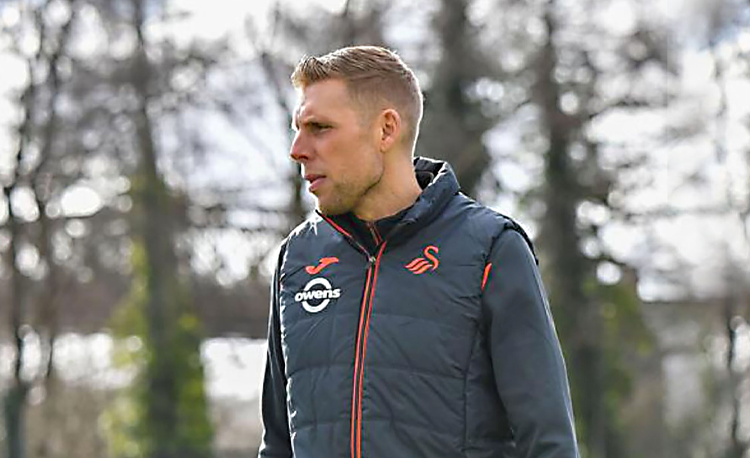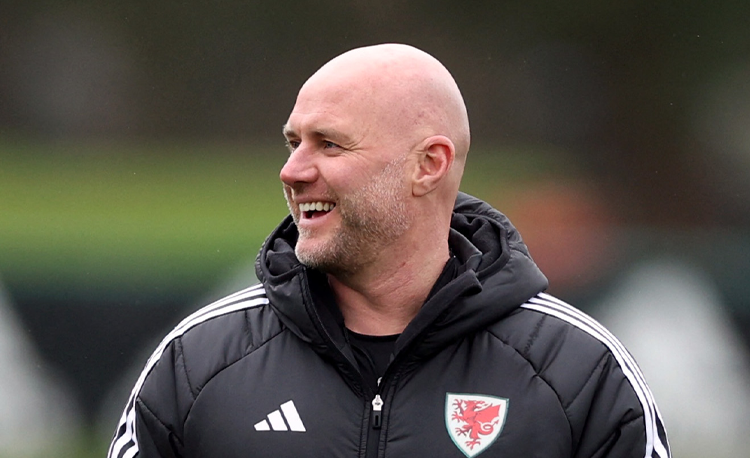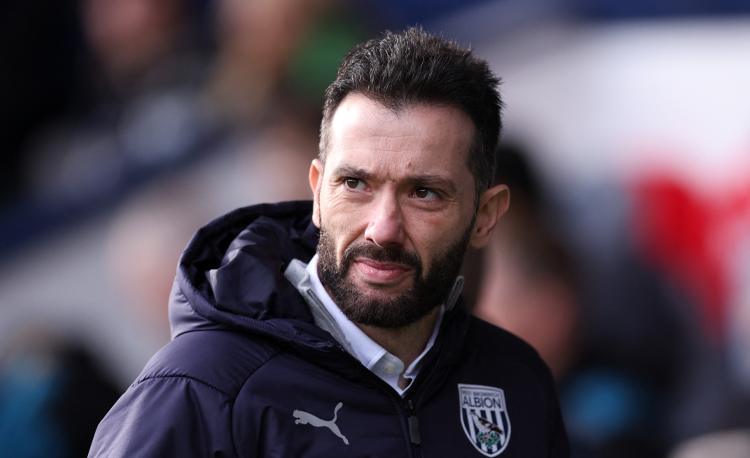You are viewing 1 of your 1 free articles
In possession: counter-pressing principles
The session is based around our principles across two key moments of the game: first, our work in possession and second, our reaction to counter-press.
| Area | Full pitch |
| Equipment |
8 mini goals, bibs |
| No. of Players | 20 players plus 2 goalkeepers (with rotating players this could include more) |
| Session Time | Rondos: 10mins, rotating players every couple of goes Possession: 4x2mins (90secs break) 11v11 game: 4x3 (1min break) |
The session is based around our principles across two key moments of the game: first, our work in possession (speed of play, staying on the ball as long as necessary, passing and receiving details, angles of support, creating and exploiting space, switching play, playing out of pressure) and second, our reaction to counter-press (pressing lines, hunting together, setting traps, making 1v2 a 1v1 when we lose the ball) and being ruthless when we win it back.
Both parts of the session are fun and competitive with rewards for both teams before going into 11v11. The rondos are fast-paced and require teamwork which unites players and gets them collaborating and communicating. This leads well into the second part of the practice where there is plenty of repetition and opportunities for players to both be in possession to create goalscoring opportunities but also find team unity in pressing relentlessly together for the reward of winning the ball back and trying to score quickly. This is a great session for increasing team communication and collaboration.
We would do this session on a MD-2 in a one-game week, to focus on our principles and behaviours going into the weekend.
“This is fast-paced and requires teamwork, which unites players and gets them collaborating and communicating”
RONDOS
Two rondo boxes are set up, 15ydx15yd, with four mini goals on the outside. In each box is another box, 8ydx8yd. In the inside box, we set up a rondo of 4v2 [1a]...
[1a]
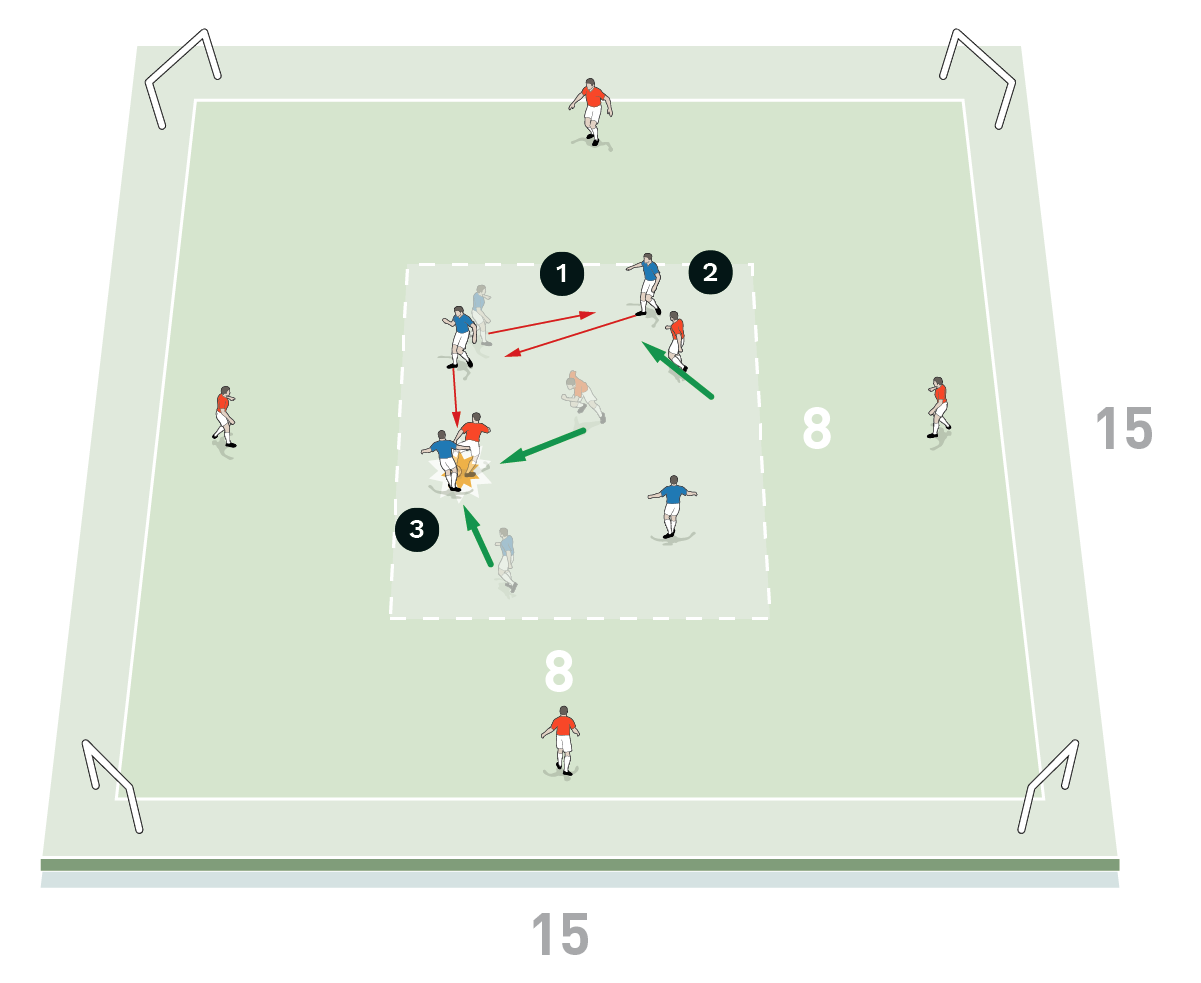
-
A 4v2 rondo is played in the centre square
- The blues look to retain the ball
- The two reds win the ball back
“Use overloads with the ball, and counter-press effectively on transition”
...when the two win it, it becomes 6v4 in the bigger box [1b].
[1b]
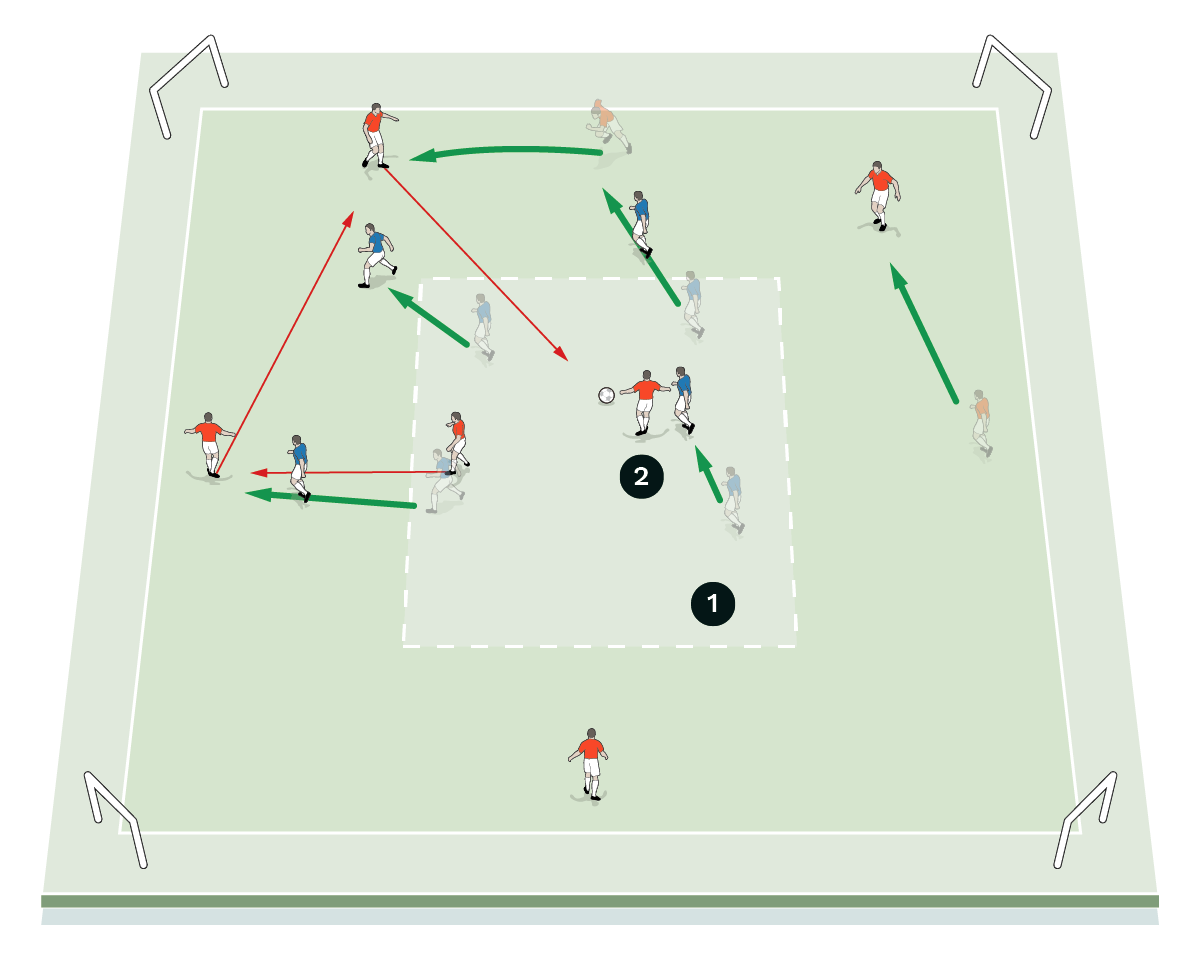
-
The rondo is now a 6v4 in the bigger box
- The reds look to retain the ball
When the four win the ball, they look to score in any of the goals (while the six counter-press to win the ball back, play out of pressure and retain the ball) [1c].
[1c]
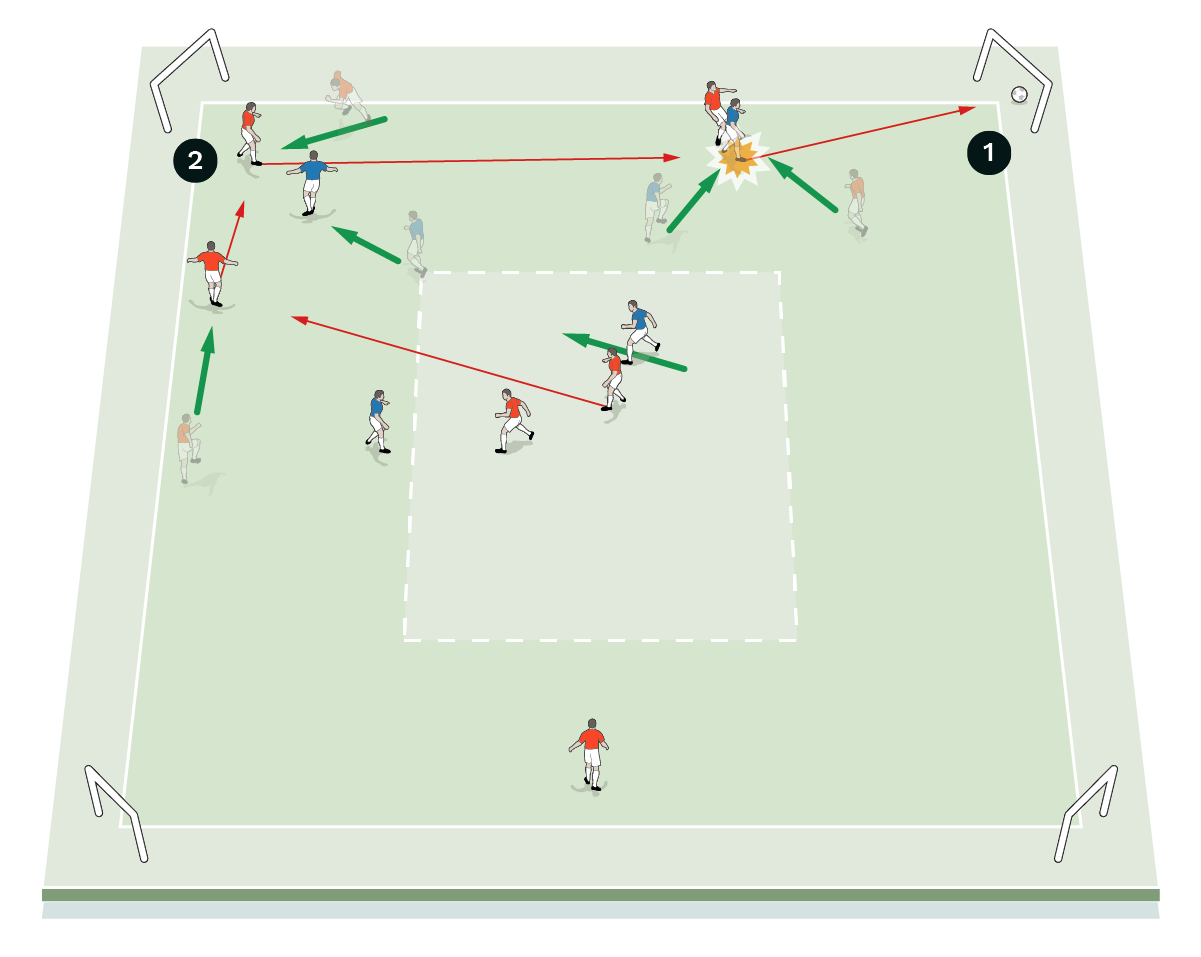
-
The blue team win the ball and look to quickly score in one of the mini goals
- The red team counter-press to win the ball back
The key themes here are to think about playing in possession: staying on the ball as long as necessary, pace of passes, details in first touch and setting the ball, angles of support, speed of play, and playing out of pressure. In transition, we are looking for the reaction to the counter-press, hunting together, setting traps, and being ruthless to score.
These rondos are designed to lead into the second practice by introducing the principles of the main session in a rondo format: utilising overloads with the ball and counter-pressing effectively on transition taking opportunities to score in mini goals.
If the players are doing well, you can change the number of passes the team building need to make before they can score centrally (we started with 10). If the counter-pressing team can’t get pressure on the ball and they are setting traps effectively and pressing together, you could make the area size smaller.
Likely mistakes from players might be the team in possession not utilising the whole space and becoming trapped in an area too quickly. The solution is to utilise overloads better and don’t miss the chances to switch to make the pressing team work. For the counter-pressing team, be ruthless on transition; scan to know which goals are free so you can score at the earliest possible chance.
Build vs Counter-pressing
Set up a 60ydx40yd box with four mini goals, and a central area 20ydx20yd with four mini goals - two face in, two face out. This is 9v9+2, and anybody can go anywhere. The two additional players work with the team in possession.
Always play into the same team who build. If they make 10 passes, they can score in the mini goals around the inside square [2a].
[2a]
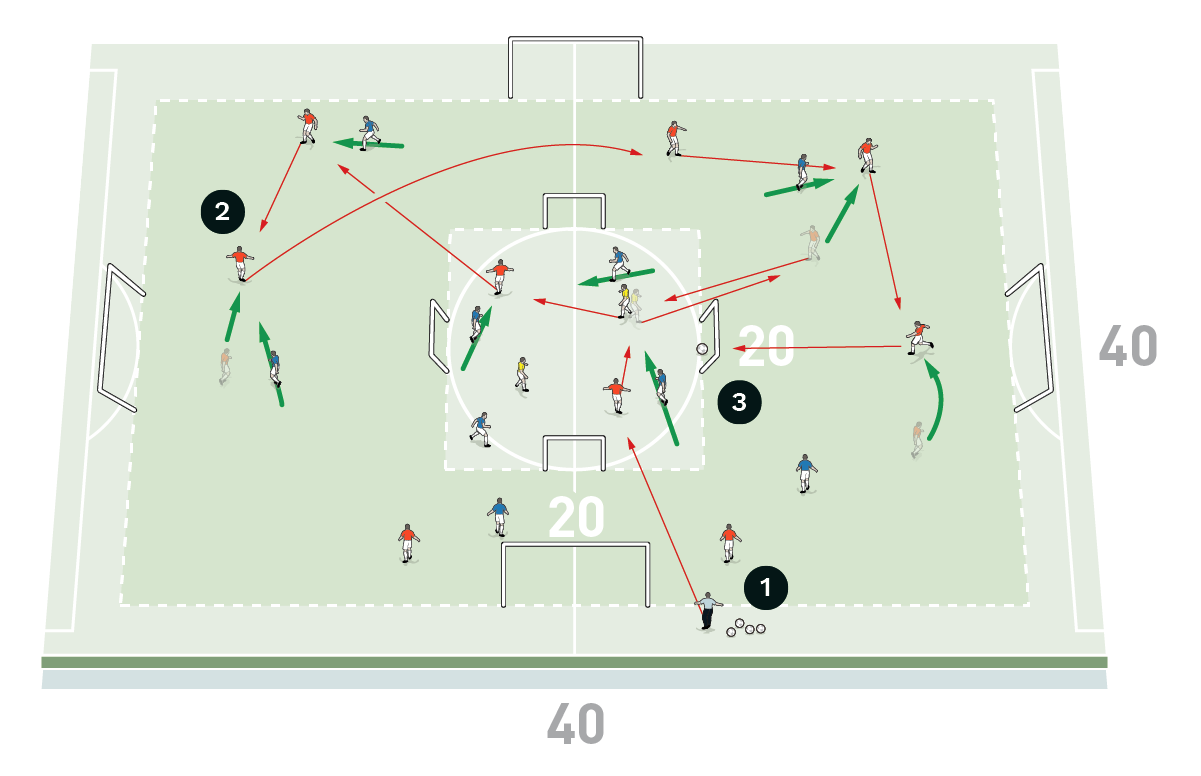
-
The coach plays the ball in to the red players in the middle area
- The reds combine with the yellows to make 10 passes
- The reds can then score in one of the inside mini goals
If the blues win the ball back, they try to score in the outside goals as quickly as possible while the reds counter-press [2b].
[2b]
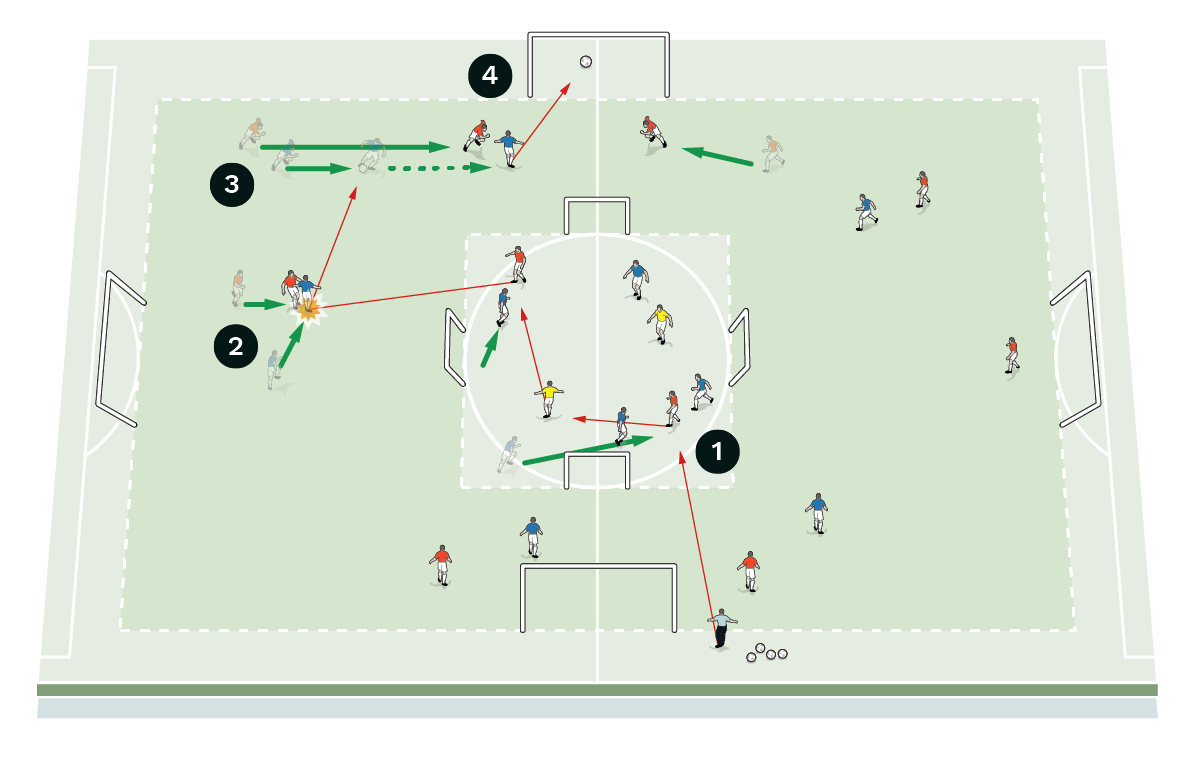
-
The game restarts, with the reds in possession again
- The blues win the ball back, intercepting a pass to the outside square
- The reds look to counter-press
- The blues score in an outside goal
If the reds win the ball back, can they score in the central mini goals in three passes? If not, they continue to build to 10 before trying to score again.
The key themes here for the team in possession are to utilise the +2 overload, switching play, speed of play, angles of support, playing out of pressure, passing and receiving details, and decision-making on when to score and when to retain. In transition, the key themes are to maintain the reaction to counter-press, hunting together, setting traps, and being ruthless to score.
11v11 Format
From there, this goes into a normal 11v11 with the pitch split into quarters. The team in possession build to the opposition goal to try and score. If they turn the ball over, their challenge is to win the ball back within five seconds. If they win the ball back within five seconds and then score in that phase of possession, their goal is worth two. If they can win the ball back in five seconds and in the same quarter they lost it, their goal is then worth three [3].
[3]
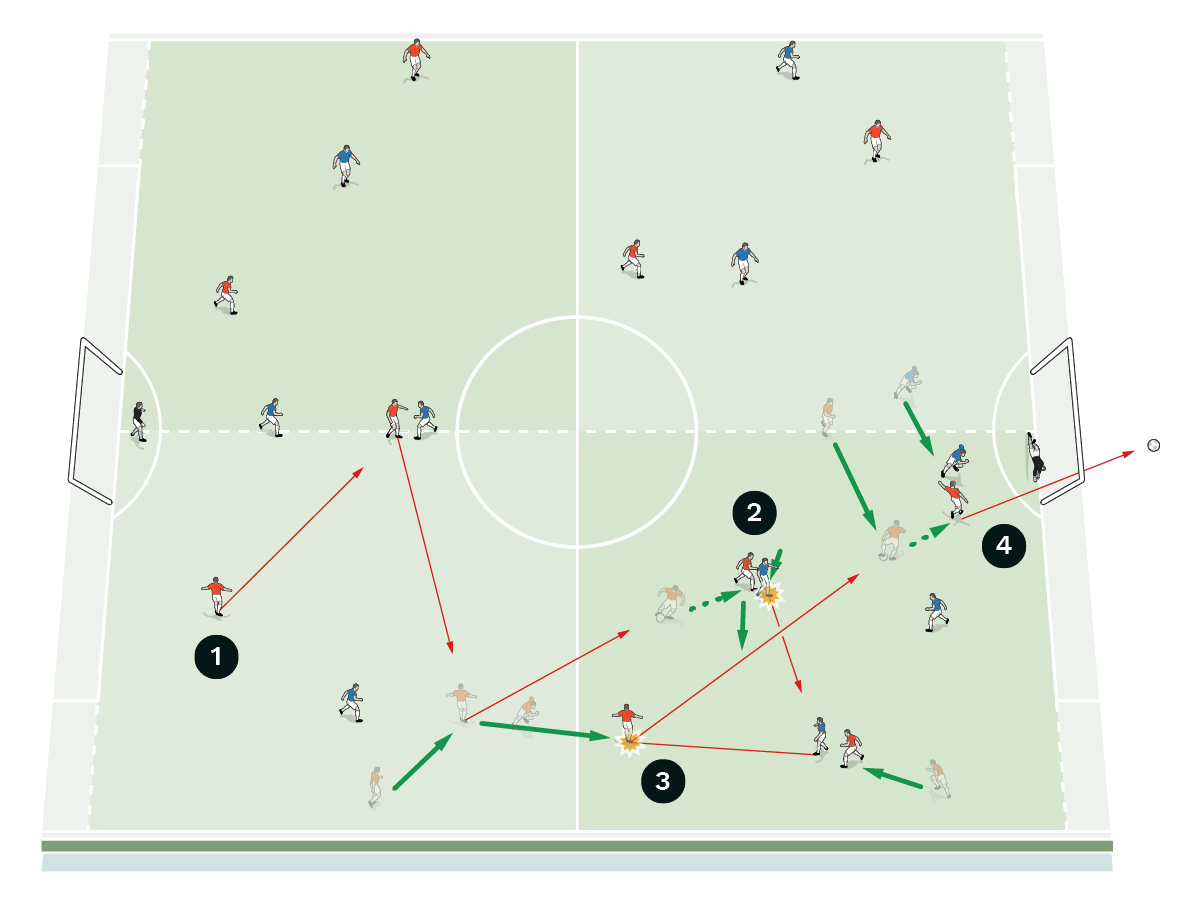
-
The red team are in possession, they build to try to score
- The blue team win the ball back through a tackle
- The reds counter-press quickly, winning the ball back in the square they lost it in within five seconds
- The reds go on to score, with the goal worth three
We maintain the previous key themes and in possession we also have to consider passing distances (short enough to counter versus long enough to play away from pressure).
“The team in possession build to the opposition goal to try and score”
Related Files
Editor's Picks
Using the goalkeeper in build-up play
Pressing principles
Intensive boxes drill with goals
Penetrating the final third
Creating and finishing
My philosophy
Pressing initiation
Compact team movement
Defensive organisation
Coaches' Testimonials

Alan Pardew

Arsène Wenger

Brendan Rodgers

Carlos Carvalhal

José Mourinho

Jürgen Klopp

Pep Guardiola

Roy Hodgson

Sir Alex Ferguson

Steven Gerrard
Coaches' Testimonials

Gerald Kearney, Downtown Las Vegas Soccer Club

Paul Butler, Florida, USA

Rick Shields, Springboro, USA

Tony Green, Pierrefonds Titans, Quebec, Canada
Join the world's leading coaches and managers and discover for yourself one of the best kept secrets in coaching. No other training tool on the planet is written or read by the calibre of names you’ll find in Elite Soccer.
In a recent survey 92% of subscribers said Elite Soccer makes them more confident, 89% said it makes them a more effective coach and 91% said it makes them more inspired.
Get Monthly Inspiration
All the latest techniques and approaches
Since 2010 Elite Soccer has given subscribers exclusive insight into the training ground practices of the world’s best coaches. Published in partnership with the League Managers Association we have unparalleled access to the leading lights in the English leagues, as well as a host of international managers.
Elite Soccer exclusively features sessions written by the coaches themselves. There are no observed sessions and no sessions “in the style of”, just first-hand advice delivered direct to you from the coach.





